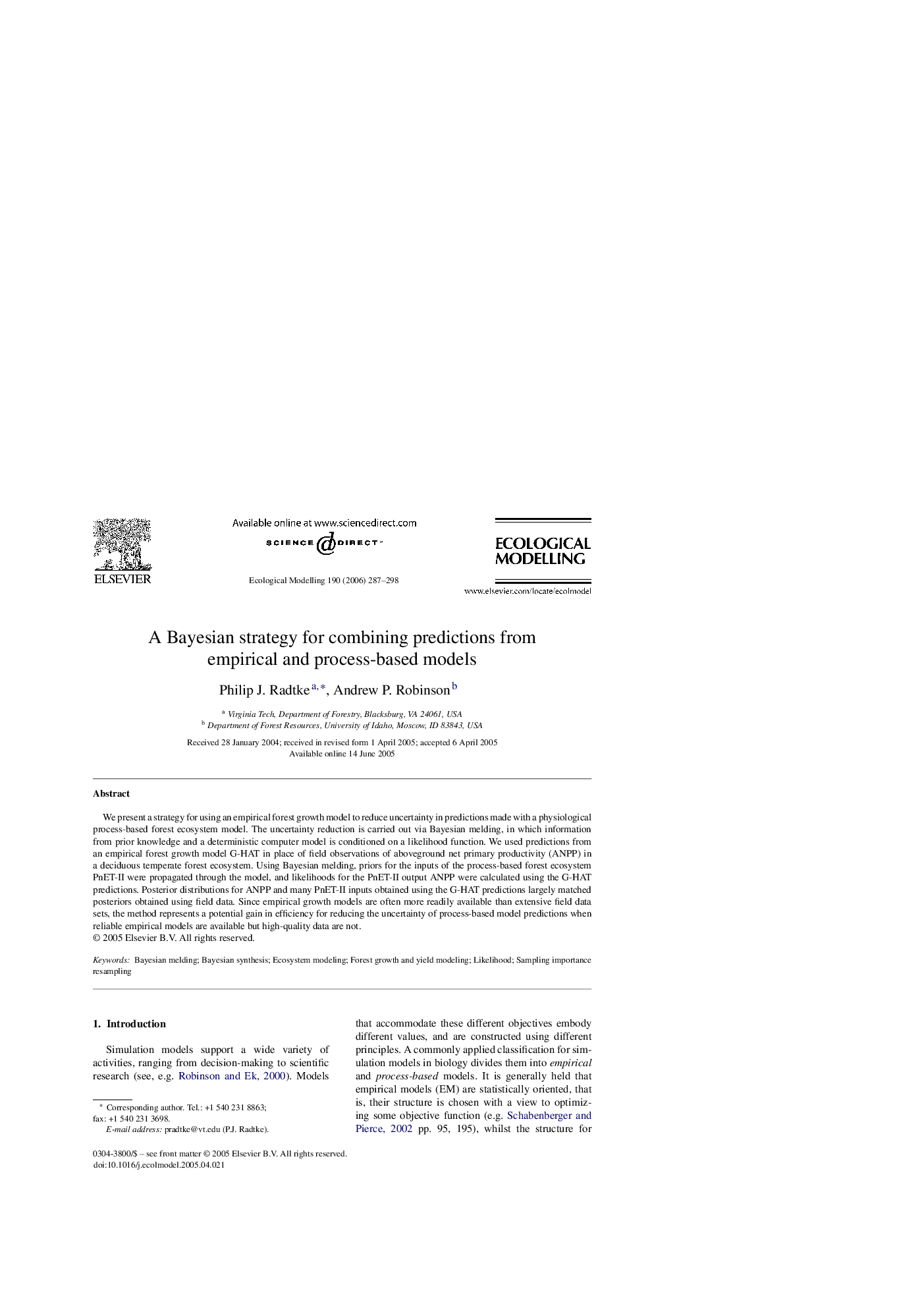| Article ID | Journal | Published Year | Pages | File Type |
|---|---|---|---|---|
| 4379323 | Ecological Modelling | 2006 | 12 Pages |
We present a strategy for using an empirical forest growth model to reduce uncertainty in predictions made with a physiological process-based forest ecosystem model. The uncertainty reduction is carried out via Bayesian melding, in which information from prior knowledge and a deterministic computer model is conditioned on a likelihood function. We used predictions from an empirical forest growth model G-HAT in place of field observations of aboveground net primary productivity (ANPP) in a deciduous temperate forest ecosystem. Using Bayesian melding, priors for the inputs of the process-based forest ecosystem PnET-II were propagated through the model, and likelihoods for the PnET-II output ANPP were calculated using the G-HAT predictions. Posterior distributions for ANPP and many PnET-II inputs obtained using the G-HAT predictions largely matched posteriors obtained using field data. Since empirical growth models are often more readily available than extensive field data sets, the method represents a potential gain in efficiency for reducing the uncertainty of process-based model predictions when reliable empirical models are available but high-quality data are not.
